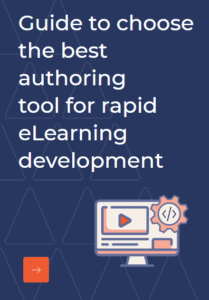When it comes to global level operations, and training employees from all across the world, the importance of Translation cannot be undermined. We already discussed how translation and localization impact globalization of training programs.
Though English is considered a global language, translating the content to regional language is often beneficial in building the connect with learners and increasing the effectiveness of eLearning too.
If you are planning on translating the existing eLearning, here are some key tips to get it right.
- Choose the right font- Font size and type can often be an issue when language conversion is done. To avoid issues, it's advisable to use a universal font. Arial font or any other Unicode font for that matter are great for translation into Chinese or Russian. In any case avoid using excessively stylish fonts as it affects both the readability as well as translation.
- Hire a Language expert (and SME) - Even if you plan on translating the entire course and the narrative to the local language, the active opinion of a language expert who is also an SME is required. An expert can assist in pronunciations, design highlights etc. that are specific for each region. An expert also ensures the proper usage of words and symbols within the course depending on the language and regional dialects.
- Skilful Use of Images, Audio and Video - While we cannot really avoid the use of videos and images in eLearning, minimal and meticulous usage is the key to easy translation. The use of audio should also be reduced to avoid complex translations followed by the hassles of re-recording in various languages. Avoid using images with embedded text, as it increases the overall effort each time the course is translated. Pay close attention to video and audio synching once the translation is done.
- Plan from the Start - The process of translation begins from when the content is created. It’s the IDs role to develop content that is translation friendly. This includes creating short content- bullet points instead of long paragraphs, using generalized content (avoid usage of culture specific Idioms, symbols and references) etc.
- Allocate Space - The text length usually varies for different languages. Translation as mentioned before should be considered right from the content design. In cases where textboxes are used, try to leave a bit of additional space in order to accommodate varied length of translated text if need be. So, carefully design text boxes keeping this in mind.
- Use authoring tools - The simplest and the easiest way to ensure that the translation is done right is by the use of authoring tools. As most tools such as Articulate Storyline, Adobe Captivate, and Lectora Inspire allow easy export into a MS-Word XML document, the content documents can be easily sent to the translator. The translated content can then be imported into the course directly too. Most tools come with language packs these days and hence represent all text variants without any issues.
Translating eLearning is the first step towards globalization of the organization, and can impart better training, and effective performance too.
We have shared some key aspects that can smoothen the process of translation. Do you have any tips to share?



